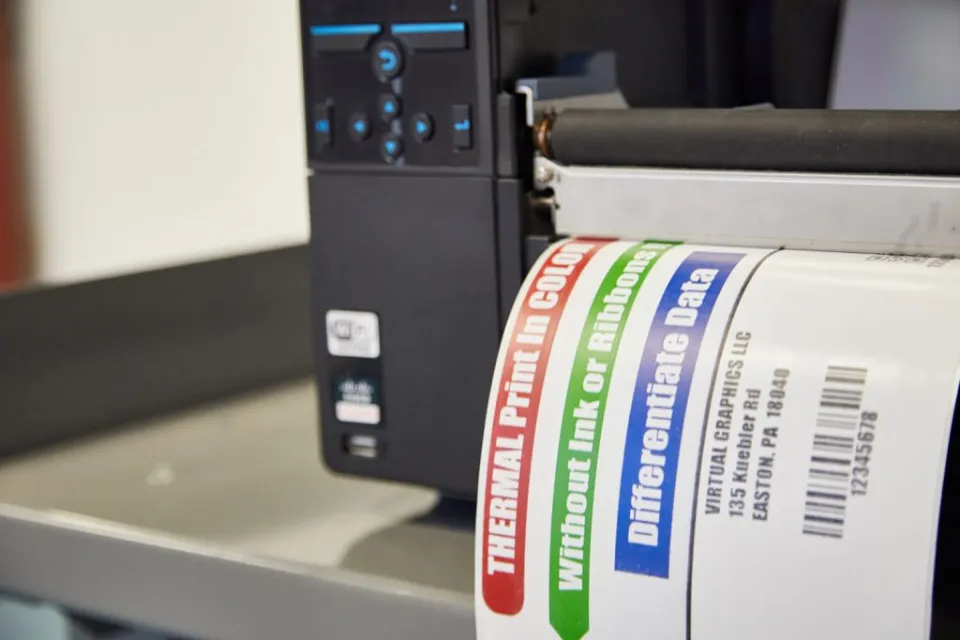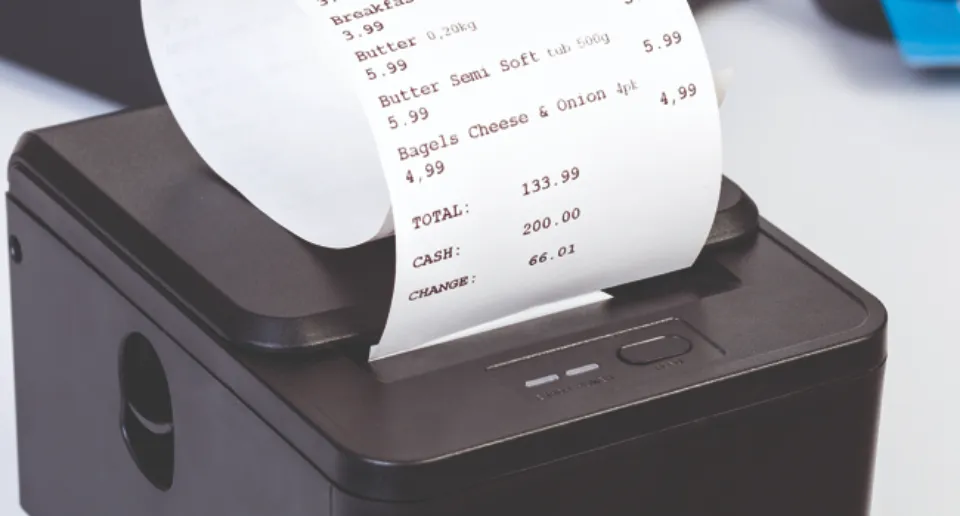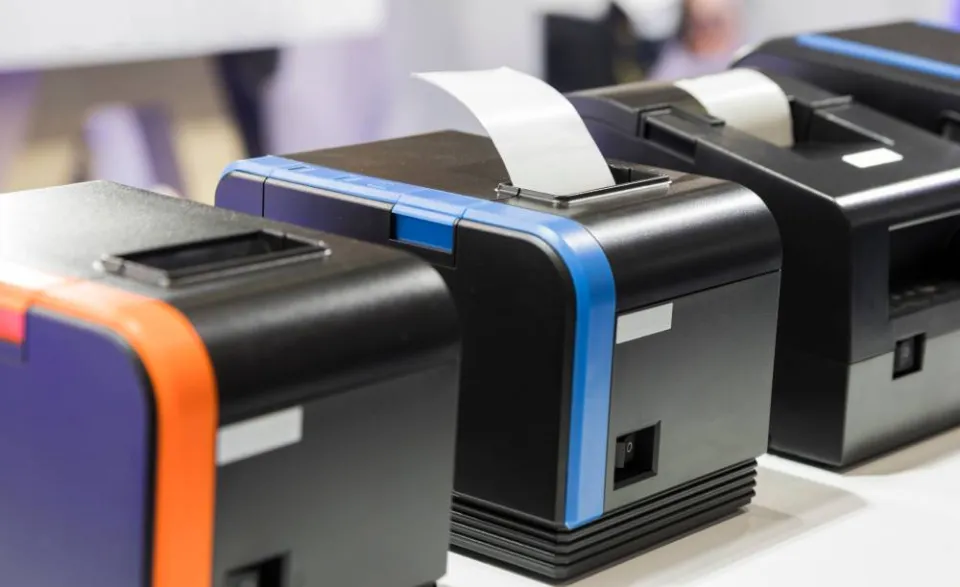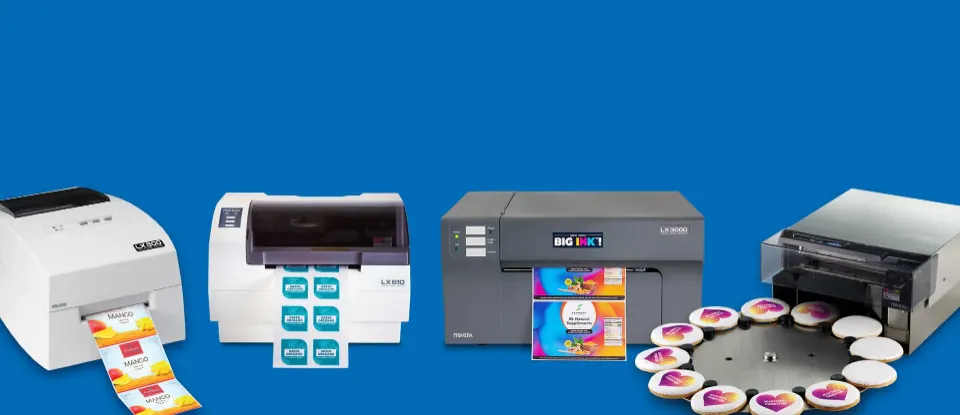
Thermal printing is a widely used technology that relies on heat to transfer ink onto a paper or label. Thermal printers are commonly found in retail stores, warehouses, and logistics facilities, where they are used to print barcodes, labels, receipts, and other types of documents. While thermal printers are known for their speed, reliability, and low cost of ownership, one question that often arises is whether they can print color.
In fact, color printing is not possible with direct thermal printers. Heat-sensitive paper, also known as thermal labels or thermal paper, is used in direct thermal printing technology in place of thermal ribbon.
In this post, we will explore the capabilities of thermal printers and answer the question: can thermal printers print color?
How Do Thermal Printers Work?

To understand how thermal printers work, let’s first look at their basic components. A typical thermal printer consists of a printhead, a platen, and a roll of thermal paper or label. The printhead is responsible for heating up the thermal paper or label, which then causes the ink to transfer onto the paper. The platen, on the other hand, is a rubber roller that helps feed the paper or label through the printer.
Thermal printers are divided into two categories: direct thermal and thermal transfer. Direct thermal printers use a heat-sensitive paper that turns black when heated, while thermal transfer printers use a ribbon to transfer ink onto the paper or label. Direct thermal printers are more common, as they are less expensive and require less maintenance than thermal transfer printers.
Can Thermal Printers Print Color?
Now, let’s get back to our original question: can thermal printers print color? The answer is both yes and no, depending on the type of printer and the application. Direct thermal printers can only print in black and white, as they rely on the heat generated by the printhead to darken the thermal paper. It is not possible to generate different colors by varying the heat, as the paper will only turn black when exposed to heat.
However, thermal transfer printers can print in color, as they use a ribbon that contains multiple colored inks. The printhead heats up the ribbon, causing the ink to transfer onto the paper or label. Thermal transfer printers can produce high-quality prints in color, making them ideal for applications such as product labeling, signage, and ID cards.

In addition to thermal transfer printers, there are also color label printers that use a combination of inkjet and thermal printing technology. These printers use thermal transfer technology to apply a clear coat of ink onto the label, and then use inkjet technology to add color to specific areas of the label. This results in high-quality, full-color prints that are ideal for product labeling and packaging.
Another factor to consider when determining whether a thermal printer can print color is the type of paper or label being used. Some thermal papers and labels are pre-coated with a color-changing chemical that reacts to heat, resulting in color images. However, these prints are often low-quality and not suitable for commercial applications.
Cost of Consumables When Selecting A Thermal Printer
Additionally, it is important to consider the cost of consumables when selecting a thermal printer. While direct thermal printers are less expensive upfront, they require specialized thermal paper that can be more expensive in the long run. Thermal transfer printers, on the other hand, require a ribbon that contains the ink, which can be more cost-effective for large volume printing. Color label printers also require ink cartridges, which can be a significant ongoing cost.
Another consideration when selecting a thermal printer is the durability of the prints. Direct thermal prints are susceptible to fading over time, especially when exposed to light, heat, or moisture. Thermal transfer and color label prints are generally more durable, as the ink is embedded into the label or paper, providing better resistance to environmental factors.
It is also important to consider the size and speed of the printer, as well as the connectivity options. Thermal printers come in various sizes, from desktop to industrial-sized models, and can print at different speeds, depending on the model. Connectivity options can include USB, Ethernet, Wi-Fi, or Bluetooth, depending on the application.
Benefits of Thermal Transfer Printers
While direct thermal printers cannot print in color, thermal transfer printers and color label printers can produce high-quality, full-color prints. Thermal transfer printers use a ribbon that contains multiple colored inks, while color label printers use a combination of inkjet and thermal printing technology. When selecting a thermal printer for your application, it is important to consider the type of printer, the type of paper or label, and the quality of the print required.
Conclusion
Thermal printing technology has come a long way in recent years, and there are now many options available for printing in color. While direct thermal printers are limited to black and white prints, thermal transfer printers and color label printers can produce high-quality, full-color prints that are ideal for a variety of applications. When selecting a thermal printer, it is important to consider the requirements of your specific application, as well as the quality and durability of the prints required.

In conclusion, while direct thermal printers cannot print in color, there are many options available for printing in color using thermal transfer printers and color label printers. When selecting a thermal printer, it is important to consider the requirements of your specific application, including the type of printer, the type of paper or label, the cost of consumables, the durability of the prints, the size and speed of the printer, and the connectivity options. With careful consideration, you can select the right thermal printer for your needs and achieve high-quality, full-color prints.
